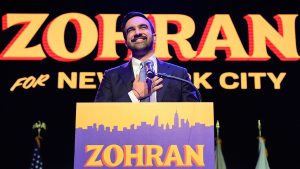California Governor’s Clash with Trump and Energy Secretary’s Paris Agreement Rebuke
In a dynamic day of live journalism that captured the political tensions at the heart of America’s climate policy debate, California Governor Gavin Newsom delivered a pointed critique of President Donald Trump’s environmental stance, while U.S. Energy Secretary Dan Brouillette made waves by urging nations to withdraw from the Paris Climate Agreement. The contrasting messages highlighted the deep divisions in American climate politics, with California positioning itself as a leader in environmental protection while the federal administration continues to push for deregulation and fossil fuel development. These conflicting visions unfolded in real-time before journalists, creating a vivid illustration of the competing approaches to one of the most pressing challenges of our time.
Governor Newsom, speaking with characteristic passion, didn’t mince words as he lambasted what he described as the Trump administration’s systematic dismantling of environmental protections. The California leader pointed to his state’s ongoing legal battles with the federal government over vehicle emission standards, endangered species protections, and public land use as evidence of a fundamental clash of values. “While Washington retreats, California advances,” Newsom declared, outlining his state’s ambitious climate initiatives, including its commitment to 100% clean electricity by 2045 and aggressive vehicle emission standards. The governor emphasized that California’s environmental policies weren’t just about protecting natural resources but were intrinsically linked to the state’s economic vitality and public health, particularly for vulnerable communities disproportionately affected by pollution and climate impacts.
Energy Secretary Brouillette presented a starkly different perspective during his address, framing the Paris Agreement as an economic hindrance to American prosperity and energy independence. He argued that the United States had demonstrated it could reduce carbon emissions through innovation and market forces rather than through what he characterized as restrictive international agreements. “Countries should follow America’s lead and reconsider their participation in an accord that demands much but delivers little,” Brouillette stated, highlighting recent decreases in U.S. carbon emissions despite the administration’s withdrawal from the Paris Agreement. The Energy Secretary promoted what he called an “all-of-the-above” energy strategy that embraces fossil fuels alongside renewable technologies, suggesting that forcing a rapid transition away from traditional energy sources would harm economic growth and energy security.
The competing narratives reflected broader tensions between state and federal authorities on environmental policy, with California exemplifying how states can pursue climate action independently when federal leadership retreats. Newsom highlighted California’s coalition-building with other states and even international partners to advance climate goals despite federal opposition. He spoke about the economic benefits California has reaped from its clean energy investments, citing job growth in the renewable sector that outpaces traditional industries. Meanwhile, Brouillette defended the administration’s deregulatory agenda as necessary for economic growth and energy dominance, arguing that technological innovation rather than government mandates would ultimately drive environmental improvements. The contrasting approaches illuminated fundamental differences in how climate change is understood—as an urgent crisis requiring immediate systemic change, or as a challenge best addressed through gradual, market-driven solutions.
Climate scientists and policy experts observing the day’s events noted the significance of these divergent messages being broadcast simultaneously, creating what one analyst called “a tale of two Americas” on climate policy. Several experts pointed out that while U.S. emissions had indeed decreased in recent years—a point emphasized by Brouillette—the reductions were insufficient to meet the Paris Agreement’s goal of limiting global warming to well below 2 degrees Celsius. They also emphasized that the emissions decline began well before the current administration took office and resulted largely from market-driven shifts from coal to natural gas, along with state-level renewable energy policies like those championed by California. The experts warned that recent rollbacks of methane regulations and fuel efficiency standards threatened to undermine even this limited progress, potentially setting the country on a path of increasing rather than decreasing emissions in the coming decade.
As the day concluded, the journalistic spotlight on these opposing viewpoints served to crystallize the stakes of upcoming policy decisions and elections for America’s climate future. Environmental advocates rallied around Newsom’s vision of states leading where the federal government had faltered, while industry groups praised Brouillette’s emphasis on energy production and regulatory relief. What became clear through the day’s coverage was that climate policy has evolved from a peripheral concern to a central dividing line in American politics, with profound implications for international relations, economic development, and environmental justice. The live journalism format brought these tensions into sharp relief, allowing audiences to witness firsthand the competing visions that will shape climate policy in the years to come, as states like California continue to assert their environmental leadership while navigating a federal landscape currently defined by resistance to climate action.










